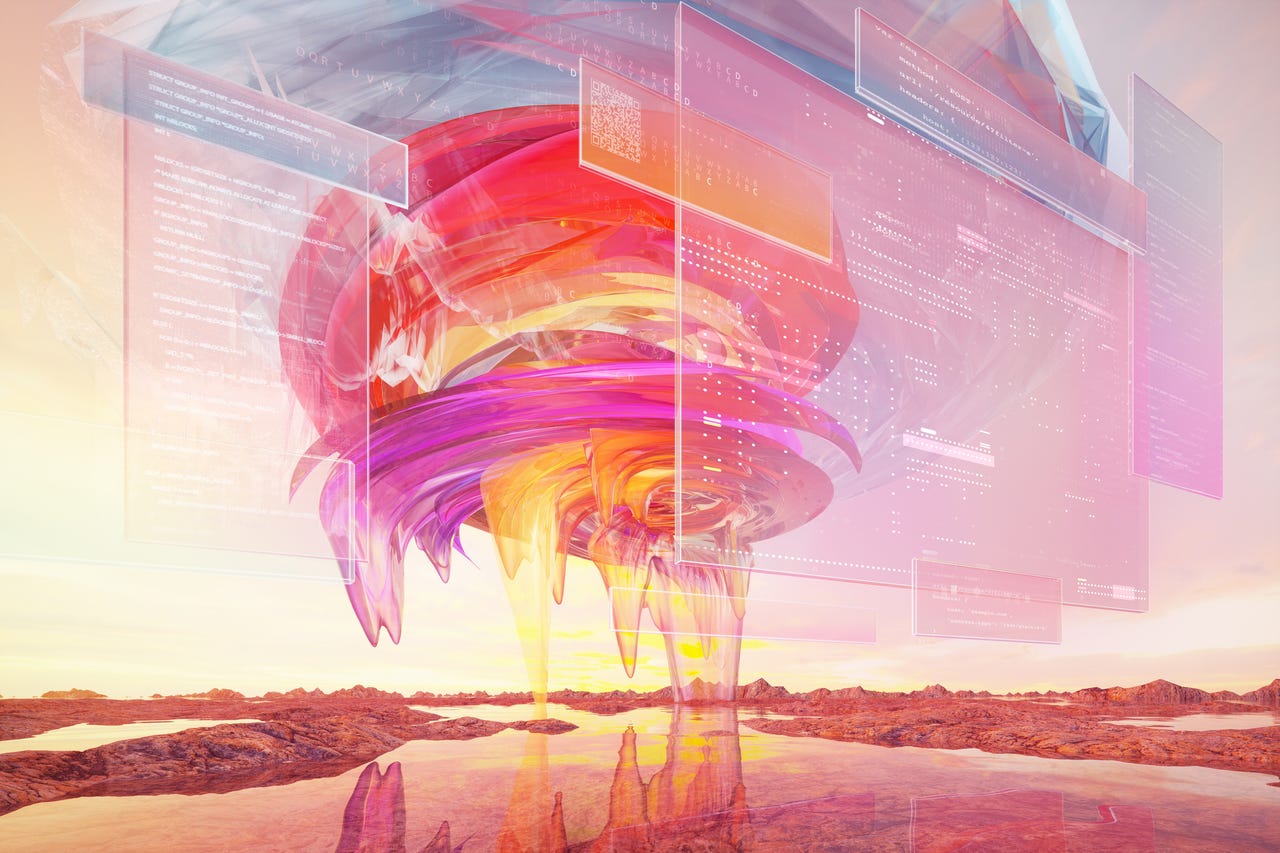
Andriy Onufriyenko/Getty Images
Many people see work as a necessary evil, but for some dedicated professionals — especially in the software and technology field — it’s difficult to tear yourself away. Known as a “flow state“, this approach to work is about immersing yourself so deeply into an activity that you lose track of time.
Now, artificial intelligence (AI) might help bring more people to this flow state. We already know AI is poised to help developers and technology professionals in many ways, from automating code generation to enabling enhanced observability across enterprise systems and pipelines. But AI will also serve as a collaboration tool that helps bring teams together, whether that’s developers working with operations specialists, or developers working with senior executives and other employees.
This capability to bring people together is especially important when team members are dispersed. At Tempo Software, a predominantly remote company, AI helps break down communication barriers and enhance developer spirit, says Shannon Mason, the company’s chief strategy officer.
In remote teamwork settings, “AI enables employees to quickly ideate and explore new ways of solving complex problems that they can then share back with their team, potentially speeding up the planning stages of a project,” she says. “This can also help developer teams to more easily enter the coveted flow state, where they experience more enjoyable, fruitful work and become fully immersed in their tasks.”
Mason adds: “AI plays a role in that by eliminating mundane work, enabling teams to tackle more impactful tasks like complex customer problems from the get-go.”
The integration of generative AI into software development processes creates another dimesions and “augments capabilities in DevOps and Agile methodologies,” says David Guarrera, generative AI leader at EY Americas. “AI can improve CI/CD processes, automate code reviews, and provide predictive insights for deployment strategies. Agile methodologies can benefit from AI in refining sprint planning, backlog management, and enhancing team collaboration.”
Generative AI might also help bridge the gap between technical and non-technical teams. “For example, the business can use large language models to summarize or explain engineering progress, aggregate feedback, and more generally translate between technical and non-technical language,” says Julian LaNeve, chief technology officer at Astronomer.
Coding assistance, which is a prominent and early generative AI use case, carries over into this flow state. “Initial trends, particularly in coding assistance tools show promising signs and suggest that huge team efficiency gains are already underway,” says Guarrera. “These AI tools, primarily focused on coding, are starting to indirectly influence broader aspects of teamwork.”
By automating routine coding tasks, “AI allows team members to concentrate on more complex, strategic work, potentially leading to more integrated and collaborative team dynamics,” he points out. “The shift from AI’s role in individual coding tasks to its integration in collaborative software development tools and platforms is gradually unfolding.”
The expanding role of generative AI in coding “is beginning to shape tools that improve low-level design creation, test case generation, and even project planning,” Guarrera says.
Technology systems and services can help build the flow state, too. “Certain project planning tools like Zendesk are building automated, LLM-generated sprint reviews to report progress to project and engineering managers,” LaNeve says.
“This saves the manager and the entire team time. Instead of team members individually summarizing and updating progress, artificial intelligence can generate those summaries. The project or engineering manager can get a cohesive summary of the entire team’s progress at once.”
Yet it’s not all good news. As reliance on generative AI for collaborative methodologies and processes increases, new risks and drawbacks may emerge, says Guarrera. “GenAI models, while highly efficient, can be misled by inaccurate or malicious inputs, also known as prompt injection attacks. This vulnerability is particularly concerning as these platforms often access sensitive data, increasing the cyber risk.” Think, for example, of hallucinations, which are a current issue in generative AI output — meaning human oversight remains essential.
While there are many documented benefits to AI, “proceed with caution,” Mason agrees. “For example, users must consider the security of the environment and be careful not to enter trade secrets. This means that currently, only those that can afford to embed individual AI apps into their organizations can fully collaborate and benefit from the tools. Those that cannot only go so far without compromising security of the input data. Additionally, AI is still very much in an early stage where it requires a little bit of guidance to unwind the inherent bias. Therefore, complete reliance on the tools at this time would be a mistake.”
Ensuring confidence in AI will not be an easy task. “To trust an AI-generated answer, you generally have to fact-check the answer independently,” LaNeve states. “Needing to fact-check answers defeats the purpose of using an AI to generate the answer in the first place. AI-generated answers need to provide confidence in their answers.”
But even keeping these risks in mind, “AI and generative AI technologies are poised to revolutionize collaborative efforts in software development,” says Guarrera. “For instance, AI can automate and refine project planning, ensuring that user requirements are accurately translated into actionable tasks. It can also assist in program management, optimizing resource allocation, and timeline management.”
Ultimately, says Guarrera, “AI-enabled platforms can facilitate clearer communication between developers, operations, and business stakeholders, streamlining the understanding and implementation of project goals.”
And that’s one giant step toward flow state.





















